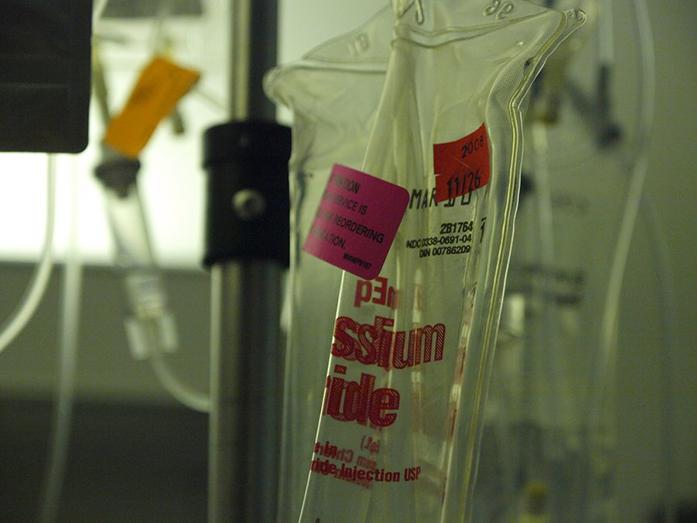By Alex Kramer
[email protected]
New medical technology aims to lessen the number of pokes and prods patients anxiously experience when encountering IVs.
Robert Anderson, a staff nurse at the University of Iowa Hospitals Cllinics Intensive Care Unit, conceived the idea, which started as a project through the Iowa Medical Innovations Group. The Pappajohn Entrepreneurial Center alongside the Tippie Colleges of Business and the Colleges of Medicine, Law, and Engineering sponsor the group.
“This device was designed to make it easier to put in peripheral IVs and to hopefully decrease the number of unnecessary pokes and unnecessarily invasive central lines in patients,” Anderson said. “This technology utilizes a kind of two-step guide-wire system to thread the needle in the vessel so the needle doesn’t accidentally poke the other side of the blood vessel.”
Anderson said the benefits will be two-fold for bedside nurses who don’t typically see any new technology to assist them: it will be simple to use and make them more successful, all while speeding up care.
“There’s some research out there that on average, the patient requires between two and three attempts to successfully start an IV,” he said. “That includes any setting where an IV is needed from a surgical center to a doctor’s office to inpatient, whatever. Especially in the clinical care setting, time is of the essence, so delays in treatment can negatively impact patients.”
Zev Sunleaf, the executive director of the UI Research Foundation, said the product has yet to see market, but the Research Foundation is working on solving that problem.
“We will usually come in and look at is there something we can patent and if we can find a commercial vendor who will take it from idea to market,” he said. “This is something that’s going to take investment by a company — to continue developing prototype versions, maybe get some government approvals for sale. It takes investment by the companies to move it forward.”
If things go well, it will be another couple of years before the technology will start making money, said Shannon Sheehan, a senior licensing associate at the Research Foundation.
“I think it’s always kind of surprising to the public, even though we have a lot of really great ideas here at the UI, unless we do the marketing and reach out to a company that will take it forward, many times the ideas don’t get picked up or see the light of day,” he said. “Like they say 1 percent inspiration, 99 percent perspiration.”
Though it is clear the device would aid patients and health-care providers alike, there’s still a long way to go, Anderson said.
“Licensing this technology is really only step one. The stage that the technology is in right now is not marketable,” he said. “There’s so many steps to go before anybody would be able to see the true impact.”
The new technology will not only ease the patients’ minds during the medical excursions, it will increase efficiency in the hospital setting as well, Sunleaf said.
“We’re glad that the technology has found a home and can actually, hopefully, get out there and benefit patients,” he said.







